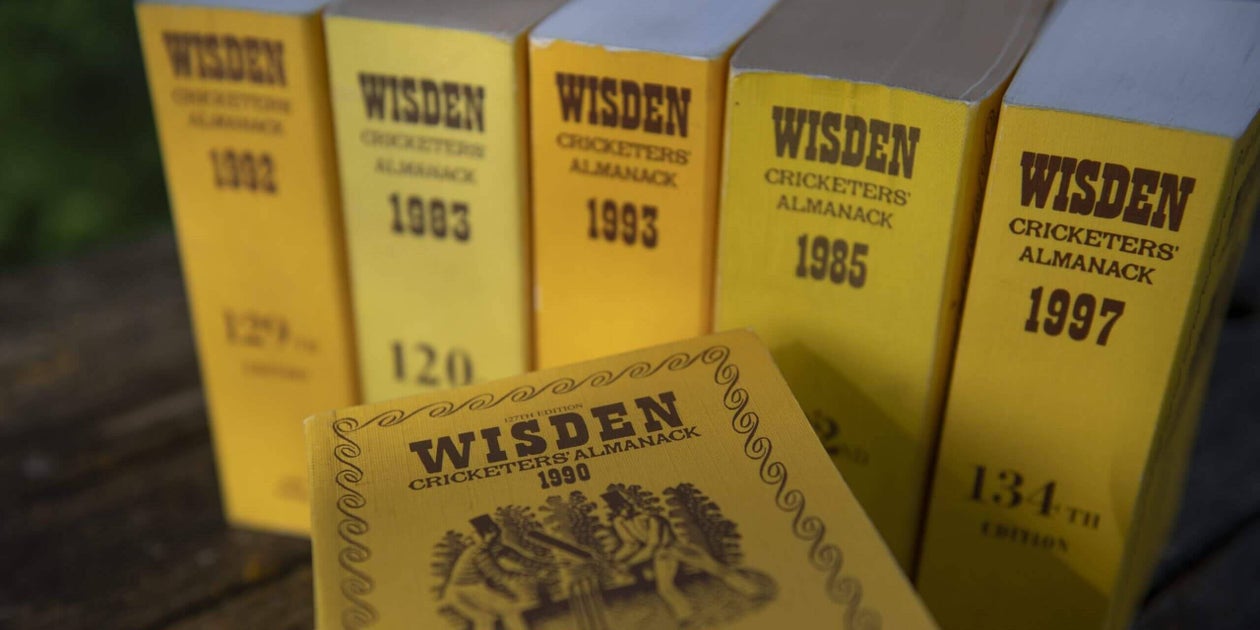Wisden Cricketers’ Almanack, the world’s longest-running sports book, has been published every year since 1864; through war, disease, societal upheaval and several enforced cancellations of cricket itself.
Its size, contents, purpose and place in the sporting universe have all evolved dramatically over the last century and a half, from the 112-page inaugural edition that contained mostly scorecards from the previous 50 years in England (as well as the dates of the Crusades and the death of George Washington) to the 1,584-page 2025 almanack that covers cricket globally, comprehensively reports on women’s matches, is packed with long-form writing — including a piece discussing the impact of AI on the game — and endless statistics.
The almanack has always been compiled and published in England, the birthplace of cricket, but now boasts readers — and collectors — from all over the world, with many prepared to pay small fortunes for the rarer editions.
Here, The Athletic explores the history of the book, the ever-lasting appeal it generates, and its celebrated place in both the cricketing and collectibles’ worlds.
The almanack was founded by John Wisden, then a recently retired cricketer, in the early 1860s. As noted by L.E.S. Gutteridge in the 100th edition in 1963, Wisden owned a tobacco and sports equipment store in central London and wanted to compete with a rival shop who, as well as selling cigars, was producing a publication titled ‘The Young Cricketer’s Guide’.
The first edition, in 1864, cost one shilling and its preface, signed by ‘John Wisden & Co.’, reads: “In offering our first edition of the Cricketer’s Almanack to the patrons of the ‘Noble Game’, we have taken great pains to collect a certain amount of information, which we trust will prove interesting to all those that take pleasure in this glorious pastime. Should the present work meet with moderate success, it is intended next year to present our readers with a variety of other matches, which the confined nature of an almanack precludes us from doing this year.”
Moderate success… and then some. It is not for nothing that the Wisden Almanack, published each April to cover roughly the previous 12 months, is now referred to as the ‘bible of cricket’.
Its prestige and history are such that a full set of original copies of all 162 books (most older editions found now are reprints or ‘facsimiles’) would today cost more than £300,000 ($400,000) if bought in one, according to Bill Furmedge, one of the world’s leading Wisden dealers. That is higher than the average house price in the United Kingdom.
However, it would be difficult to buy a full set of originals all in one — for starters, nobody knows how many full sets are out there — so the accumulation process is usually gradual. If done intelligently, Furmedge estimates it is possible to acquire all 162, as originals, for around £150,000. As for a complete set containing facsimiles, he believes that can be attained for under £20,000.
“The rarest original edition of all is the 1875 one,” Furmedge, who left his job in publishing in 2008 to work full-time selling Wisdens, tells The Athletic. “Wisden printed 250 of them, but got more orders, so ran second and third print runs. However, there was a fire in the premises and nearly all of the second and third runs were destroyed. So if an 1875 comes up today and it has the original wrappers and is an original book, it would probably cost £45,000 to £50,000.
“The second-rarest edition is the 1897 hardback. The first hardback came out in 1896 (the earlier editions were all paperback), but it didn’t sell very well, so the next year Wisden reduced the print run, meaning there are fewer of the 1897 editions around.”
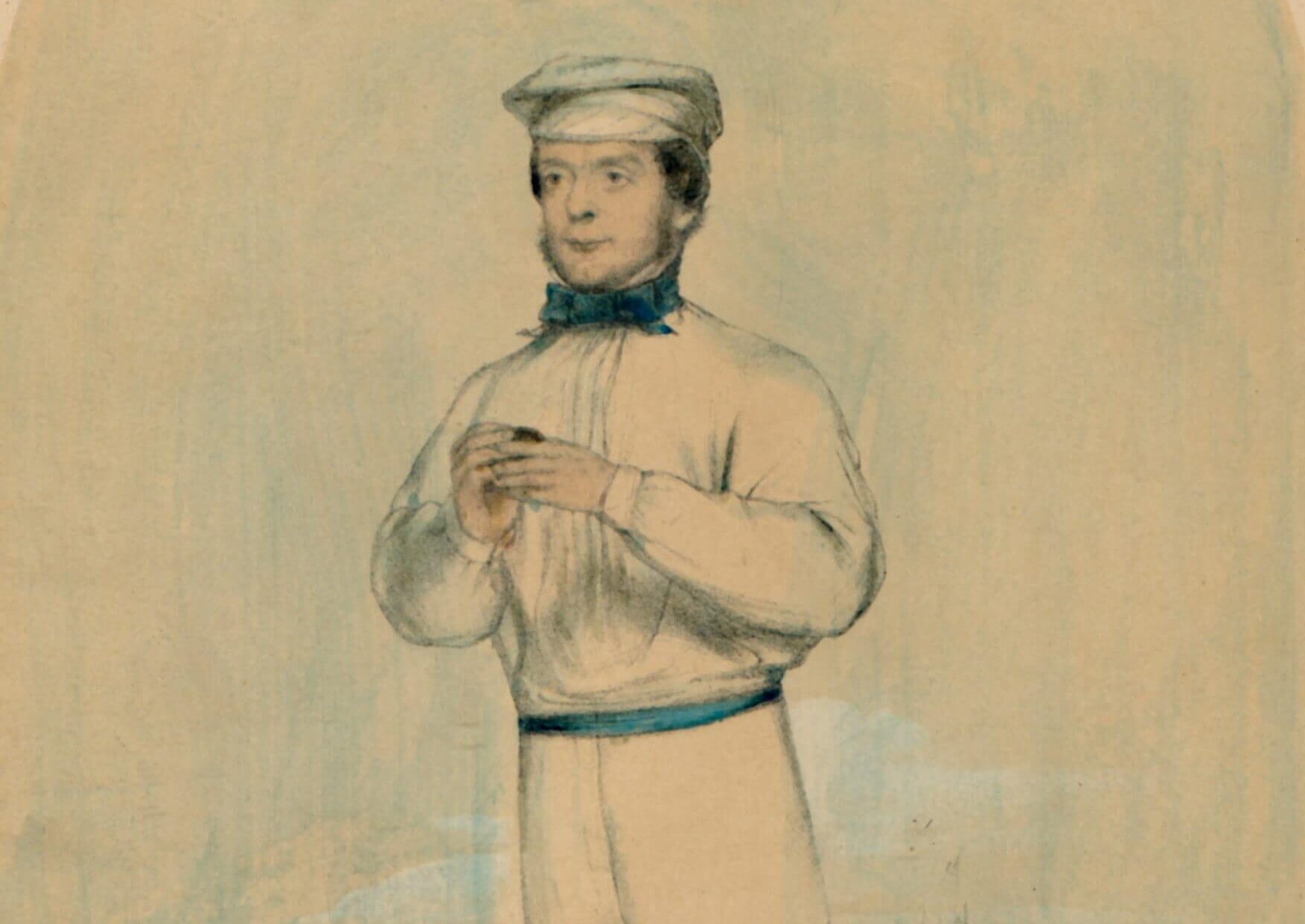
A portrait of John Wisden in the 1850s (The Print Collector/Heritage Images via Getty Images)
Furmedge, whose interest in the almanack started as a child in 1979 after he spotted a yellow tome in his local library and became immersed in its scorecards, says the most he has sold one book for is more than £35,000. He has around 3,500 Wisdens in his possession, with some kept inside a safe.
He is positive about the future of the almanack in our digital world, estimating that the average age of a Wisden collector is around 45, having dropped from 55 in recent years. Around 90 per cent of his sales are to people living in the United Kingdom, with the rest mostly in the United States, Australia and New Zealand. Furmedge, who sells around 50 books every week (that figure rises towards 100 as Christmas approaches), runs the website Wisdenworld and is based in Cambridgeshire, England.
So, how did a small book, launched in the middle of the 19th century, that largely listed the results of cricket matches from bygone years, grow into a pillar of the sport’s society, which is sought after, referenced and quoted well into the 2020s? And how has it had to adapt to remain relevant today when people can check records and browse old scorecards in a few clicks on the internet?
“We want people to pick it up and read it like a book, but also have that facility to browse and lose yourself in the way Wisden encourages readers to do,” says Lawrence Booth, who bought his first Wisden in 1990 at the age of 15 and has been the editor of the almanack since 2012.
“The internet changed Wisden’s raison d’être. It used to be the book of record and people went there for all the stats, but then the internet came in and it can update its stats by the second, whereas Wisden gets one crack a year. So it had to slowly reposition itself by maintaining the most important numbers, but pushing it more in the direction of a book to read.
“So the first 300 pages or so are what we hope is the best cricket writing around that year.”
Booth, speaking to The Athletic, adds: “We occasionally get letters saying ‘why have we got rid of the scorecards from the Sheffield Shield (a domestic competition in Australia)?’ or similar, but we have to adapt all the time. Matthew Engel, one of my predecessors, used to say that editing Wisden was like pruning a tropical jungle each year. You have to work out what you will keep and include.
“There is more cricket, women’s cricket is growing, and that needs to be reflected. You have to make cuts and you are constantly mindful of keeping the book within about 1,500 to 1,600 pages. We are always thinking about what we can sacrifice, even though we don’t really want to sacrifice anything.”
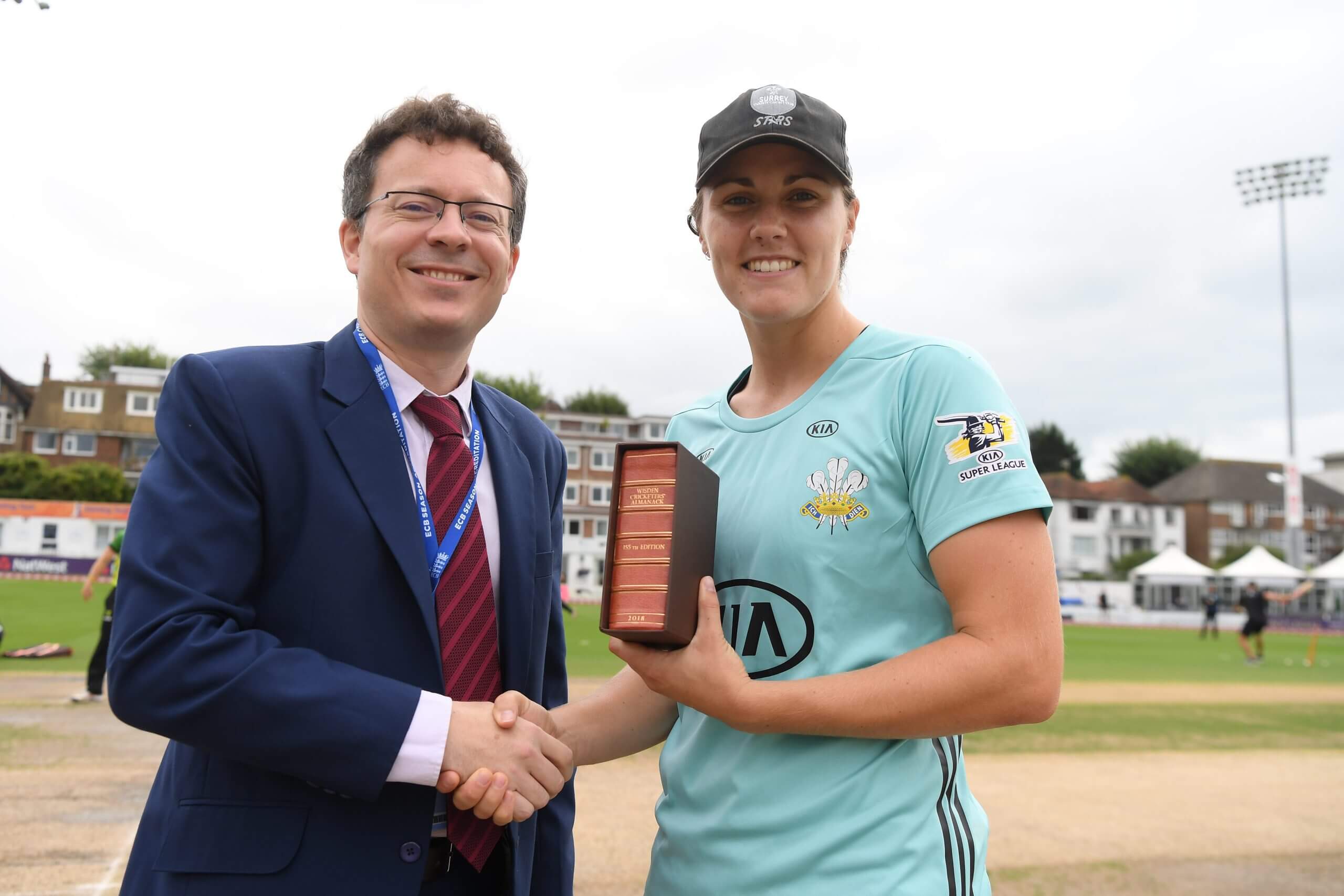
Booth presents Nat Sciver (now Sciver-Brunt) of Surrey and England with her award as one of Wisden’s Five Cricketers of the Year in 2018 (Mike Hewitt/Getty Images)
The modern editions of the almanack, which cost around £50 each, are — as Booth says — roughly 1,500 pages long, with one notable exception.
Cricket, like the wider world, came to a standstill in the spring of 2020 as coronavirus spread and, at one point, it seemed the sport wouldn’t be played at all in the English summer. A similar situation had arisen during the two World Wars, with the editor of the 1916 edition, Sydney Pardon, writing in that year’s preface that: “The question of coming out at all was seriously considered, but the proprietors decided not to break the continuity of over half a century.”
The sport did, belatedly, get going again in 2020 and the 2021 almanack (covering most of 2020) totals 1,248 pages. The 2020 and 2022 editions both contain 1,536 pages. Booth says of the 2021 book: “It was (challenging), but we reached the conclusion that it was actually OK and that when that book sits alongside the others on the shelf, you can see that it is thinner and that tells you something about what was going on in the world that year.
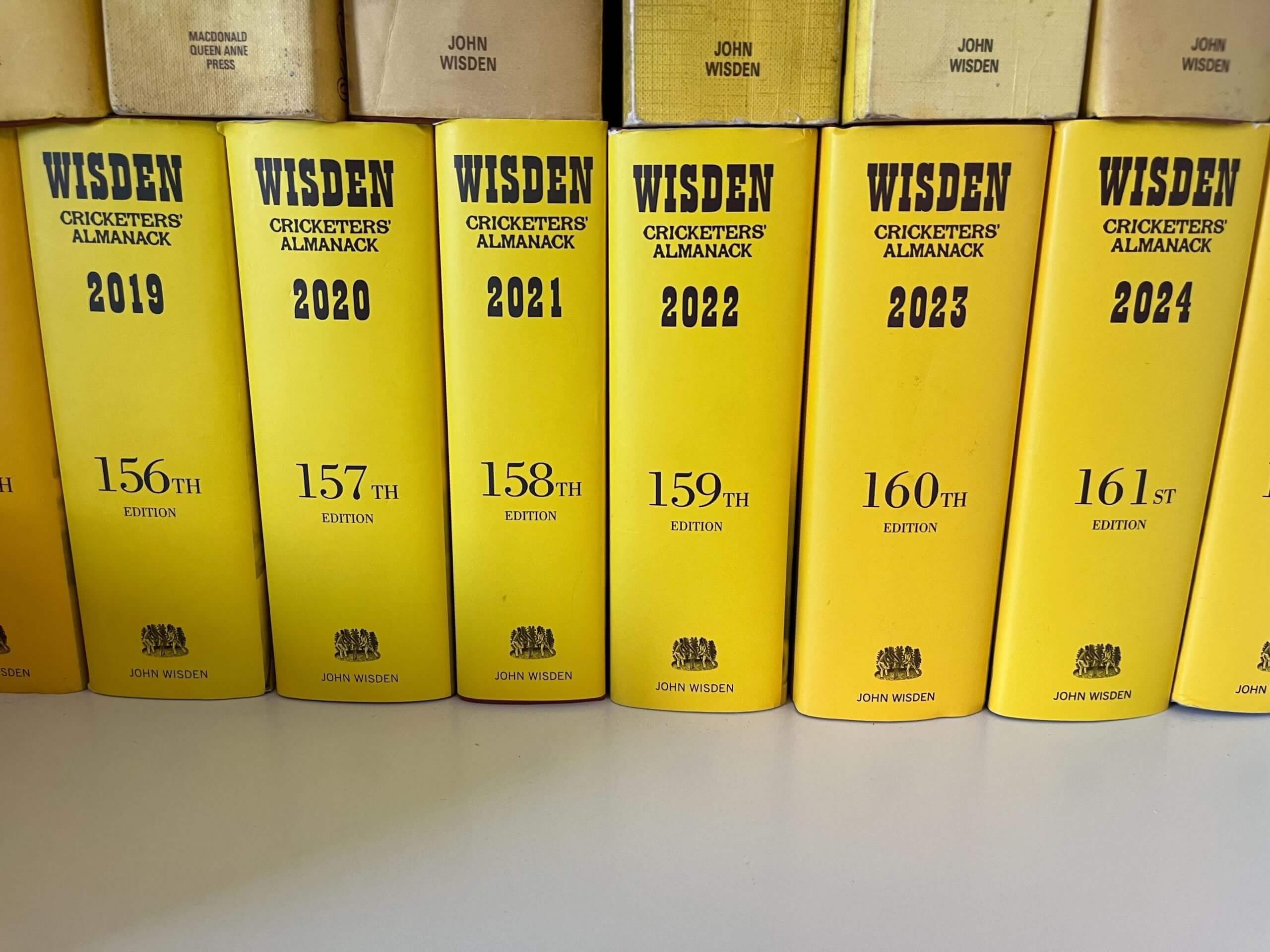
(Will Jeanes/The Athletic)
“Benny Green, who anthologised Wisden years ago, used to say that at its best it was a social history of England and, to a degree, the world, which I always try to bear in mind. The best sports pieces go beyond the sport and I am always happy to reflect the world as it is.”
Booth estimates that there are fewer than 100 full sets of original copies around the world, but stresses that nobody knows for sure.
It is also worth pointing out that a grammatical quirk means the book was titled: ‘Wisden Cricketer’s Almanack’ up until 1868, before the apostrophe was moved to its current place to read: ‘Wisden Cricketers’ Almanack’.
One of the many joys of Wisden is that you can dip in and out, perusing whatever takes your fancy.
Essays on the state of the game, scorecards from all over the world, and the complete list of the births and deaths of every Test cricketer — both male and female — are just a fraction of the content between the famous yellow covers (the colour varied before 1938).
There are glorious anecdotes, pieces of trivia and statistics waiting inside for curious readers. In the 1952 edition, published shortly after the death of King George VI (a keen cricket fan), there is the story of the future monarch — in a match at Windsor Castle — taking three wickets in three consecutive balls (a hat-trick) as a young boy. The three victims? His grandfather, King Edward VII; his father, the future King George V; and his older brother, the future King Edward VIII. Delightfully, the three royals were dismissed in the same order they reigned as King.
Or in the 1985 almanack, where a scorecard from a schoolboy game reveals that future England captains Nasser Hussain and Mike Atherton dismissed each other as 16-year-olds. They went on to play 57 times together for their country’s Test team.
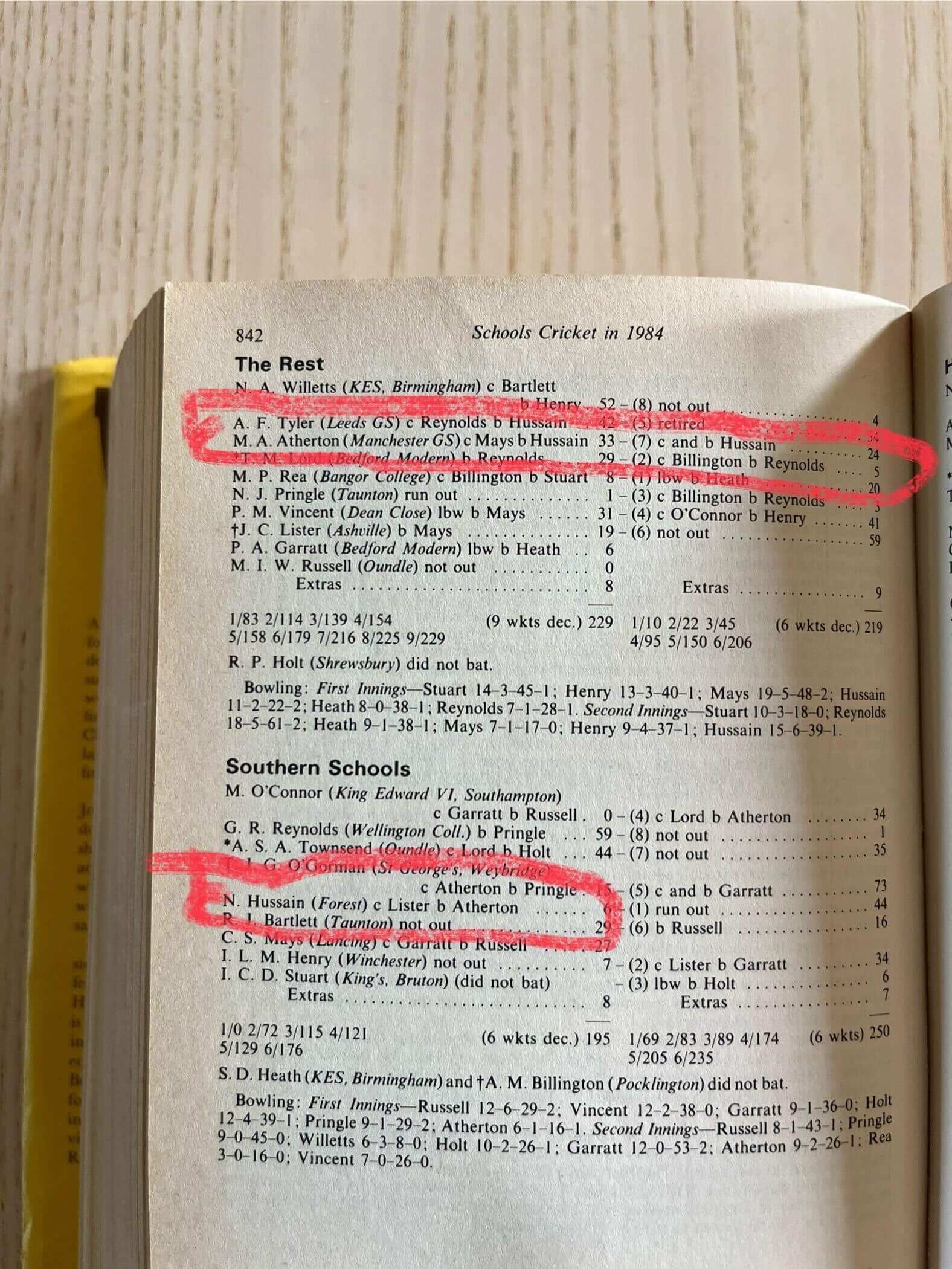
(Will Jeanes/The Athletic)
And in a magnificent literary and sporting crossover, the fact that Arthur Conan Doyle — the British writer and creator of Sherlock Holmes — who was an avid part-time cricketer, took just one first-class wicket in his playing days: that of W. G. Grace, one of the greatest batters in history. Doyle later wrote a poem about his feat (which he achieved in 1900).
There is also sadness and a reminder of tragedy.
In the records section of every modern almanack, there is a list of each player to have scored a double-hundred (200+ runs in an innings) on first-class debut. There are just 25 names and, under that of Norman Callaway, an extra line reads: “In his only first-class innings. He was killed in action in France in 1917.”
In February 1915, at the age of 18, Callaway scored 207 runs for New South Wales against Queensland in Sydney in his native Australia. The First World War interrupted his promising career and, as Wisden notes, he died on the battlefields of Europe fighting for the British Empire two years later. Callaway still holds the record for the highest first-class batting average.
Callaway was one of many cricketers killed in the First World War. As Patrick Kidd noted in the 2021 edition, there were more than 80 pages of obituaries to the cricketing dead in the 1916 almanack alone.
Needless to say that, as with the coronavirus, the Wisdens published during both World Wars were far smaller than in the immediate years before and after due to the lack of cricket being played. The 1914 edition had 799 pages, but that figure had dropped to 299 by 1916, and in 1939 it was 958 pages, but down to 426 by 1941.
As Booth says, the book reflects the world as it is.
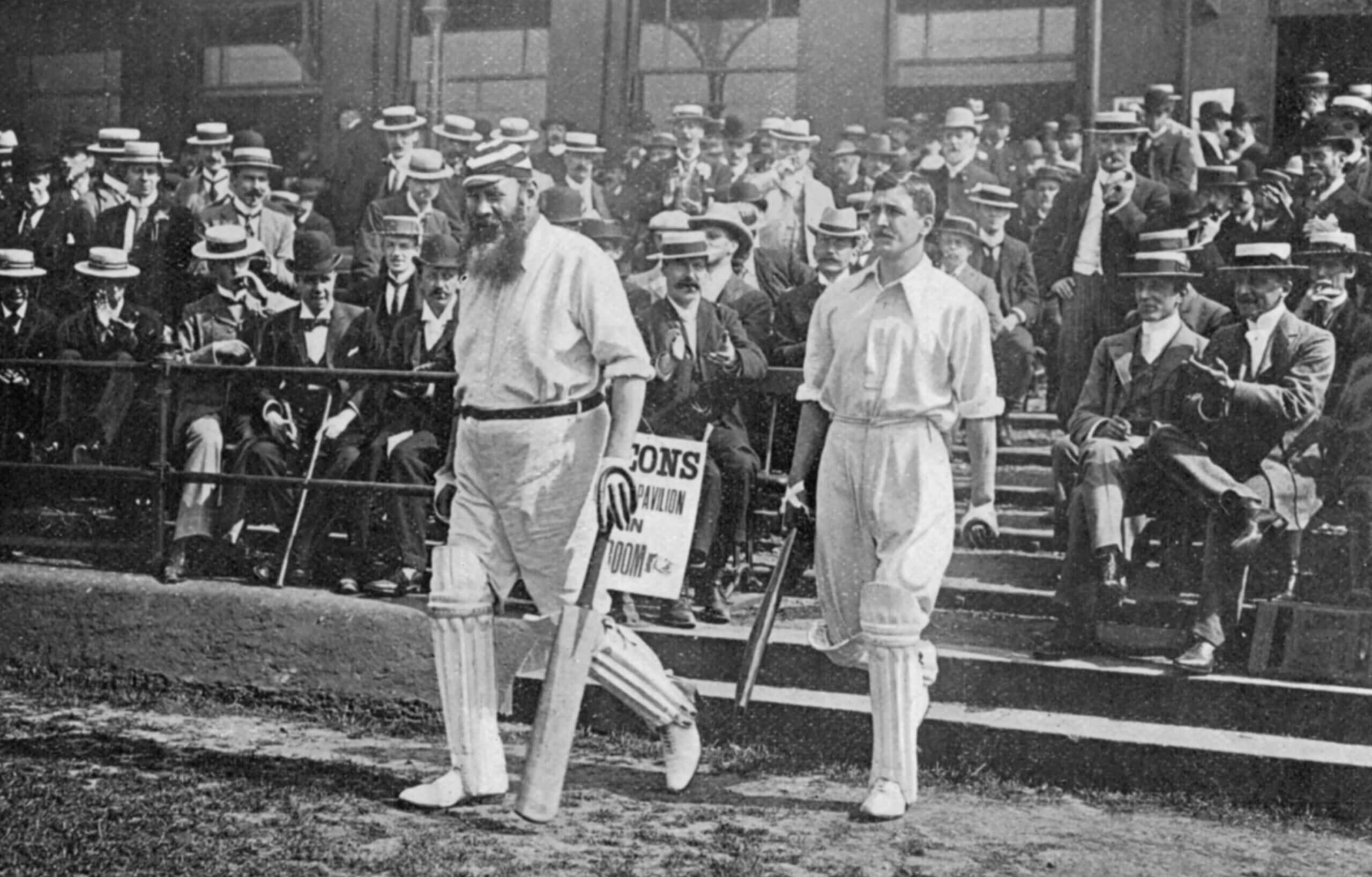
The bearded W.G. Grace, who was Conan Doyle’s solitary victim (The Print Collector/Print Collector/Getty Images)
The continued success and prestige of Wisden has brought about a collecting industry brimming with enthusiasts, experts and intrepid punters who all contribute to the almanack’s ongoing longevity.
Among them is Polly Starkie, a journalist who inherited more than 50 editions of the book from her grandfather.
“My grandad died in 2019 and he had been collecting Wisdens for years,” Starkie tells The Athletic. “The collection goes back to 1934 and there are gaps in there, but he was a serious collector.
“I’m one of 16 grandchildren, but by far the biggest cricket fan, so I was fortunate to get the collection, which we had to take from Ireland to England in a huge box on the ferry. They are my prized possessions.
“To look at the dates (on the Wisdens)… in so many of those years, he would have had a child or grandchild born — cricket is parallel with normal life. I’m going to look after the collection well.”
A dream new year for any cricket badger…organising my inherited collection of Wisden (pretty much every one since about 1950 & some pre 1950)
Need to catch up on 2020 onwards but a bit of a shrine thanks to my cricket loving Grandad ❤️ pic.twitter.com/AGZT9OjGHY
— Polly Starkie 🎙🏏⚽️ (@pollystarkie04) December 31, 2024
Starkie’s grandfather, who was a season-ticket holder at Lancashire County Cricket Club for many years, helped get her in to the sport.
“Cricket was always something my grandad talked about; he absolutely loved it. Whenever I went to my grandparents’ house, the TV and Test Match Special (the BBC’s radio commentary) would be on and I remember going to Edgbaston with him. Cricket is just a huge part of our family.
“When I was going through them (the Wisdens), I could see there were bits of paper inside, like the delivery notes and old Test match tickets. I like having those physical pieces of paper to remember his existence.”
Starkie says the growing coverage of the women’s game has only increased her enjoyment of reading the Wisdens. “I remember seeing the 2018 edition with Anya Shrubsole on the front after England had won the 2017 Women’s World Cup, and thinking: ‘This is really cool’.”
That 2018 edition marked the first time that a woman had been on the cover of a Wisden Almanack. The first time the women’s game was mentioned in the almanack at all was — according to Gutteridge in his essay in the 1963 book — in 1938.
Another collector is Steve Green, a British migrant in Spain. Green owns all 162 Wisdens, from the 1864 edition, which came out during the American Civil War, to the 2025 edition, which was published in April.
“I went to The Oval to see England vs Australia in August 1961 with my father and, the following year, I saw this yellow book with all of the scores from the previous year, including the match I went to. So I saved up my pocket money to buy it as a reminder, and that was it,” Green tells The Athletic.
He has bought Wisden every year since, usually as soon as it is published.

Green’s double-banked and multiple-shelved collection (Steve Green)
“In the 1980s and 1990s, I went to rare book fairs to buy old Wisdens, slowly, back to 1944 and then I had a stroke of good fortune — a company called Willows started producing facsimiles from 1879 to 1943 at reasonable prices.
“I then bought facsimiles of the first 15 editions from 1864 to 1878 on eBay during the 2000s. So I have all 162 editions, half originals and half facsimiles. They took a hell of a lot of boxes to get to Spain.
“I get them down (from the bookshelf) quite frequently after something crops up on a podcast or on TV. It’s like going down a rabbit warren, you just keep on reading.”
Green says he has never considered selling his collection, citing how pleased he is to have a full set. He references the 1934 edition, covering the infamous Bodyline Ashes series between Australia and England, as a particularly good read.
Wisden remains in a very strong place in both the cricketing and collectibles’ worlds and, given its skilled curation and the devotion of its readers, that is unlikely to change any time soon.
People will continue to spend large sums of money on rare editions to fill gaps on their shelves and the books themselves will continue to act as reference points, historical records and so much more.
We must hope that the number of pages does not drop again, but, as the past shows, it would take an awful lot for the almanack not to come out one April.
Here’s to the next 162 editions.
Click here to read more cricket stories on The Athletic, and follow Global Sports on The Athletic app via the Discover tab.
(Top photo: Visionhaus)
